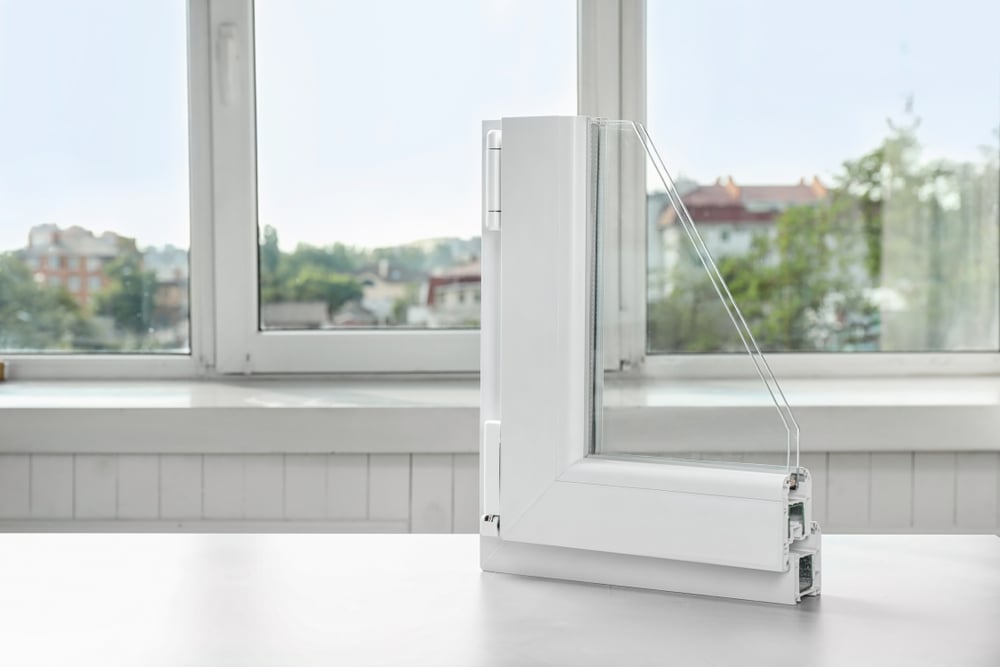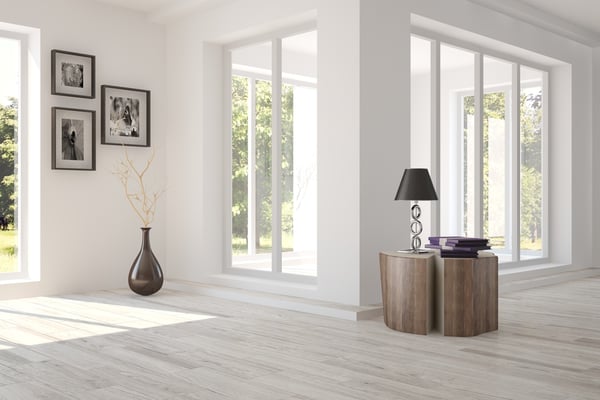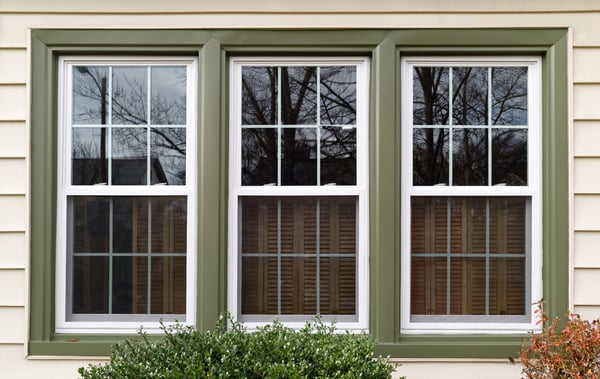Energy Efficient Windows, Part II: Cost, Types and Frames

Energy efficient windows are available in various configurations. Ideally, you should select a product that matches the architectural style of your property, while providing effective insulation. There are now windows that reduce heat transfer by over 80% compared with conventional single-pane glass. This saves on both air conditioning and space heating, since heat transfer is reduced in both directions.
Energy Efficient Window Costs
High-performance windows offer energy savings in both homes or business, reducing utility bills. However, a window replacement requires a high initial investment, and the following are some factors that affect project costs:
- Types: The are different window types to choose from, and this influences their price. Double hung windows are among the most popular.
- Frames: There are several material options for window frames, which include vinyl, wood and fiberglass.
- Amount replaced: The total cost for new windows will depend on the project scale. Consider that a larger project may have a lower cost per unit, due to volume discounts.
- Performance level: Energy efficient windows come in various performance levels, and this influences their cost. New windows can have double or triple pane glass, an ENERGY STAR rating, gas insertions and special coatings, among other options.
- Installation and labor cost: Qualified professionals are required to install new efficient windows, which guarantees proper installation and high performance. The average labor cost for window installation is US$38/hour.
- Warranties: Ideally, energy efficient windows should come with a reliable warranty. This protects your investment, and should always be considered when buying new windows.
Improve your building's energy efficiency and reduce electricity and gas bills.
Energy Efficient Windows: Main Concepts

Before discussing the different types of windows and frames, it is helpful to get familiarized with the terms used to describe them.
Glazing: This is simply the glass used by a window. It describes the number of glazing layers - single, double or triple. It is important to know that the number of layers is not the only factor that determines efficiency. Coatings and gas insertions are also important for window performance.
Low-E: This means low emissivity, which describes the reflectance of windows. In efficient windows, thin layers of a metallic substance are placed between glazing, which reflects heat instead of absorbing it or letting it through. Low-E coatings increase price by about 10%.
Gas Fills: Gas fills in windows are placed between glazing layers to improve insulation and reduce heat transfer. Argon and krypton are the most commonly used gases.
Spacers: Spacers are placed between glazing layers to improve insulation. Spacer materials and designs focus on preventing condensation and heat loss.
Window Types
There are a vast amount of windows in the market, some of the most common replacement home windows install in homes are the following.
|
Window Type |
Description |
Avg. Price (US$) |
|
Single Hung |
One bottom sash that opens up or down |
170-360 |
|
Double Hung |
Upper and lower sash openings |
300-850 |
|
Arched |
Shaped to form an arc |
325-500 |
|
Awning |
Hinged on the top and open outward |
420-760 |
|
Bay |
Made from three or more windows that angle out beyond a wall |
1,150-3,550 |
|
Casement |
Folding windows that open either left or right |
270-750 |
|
Circle |
Rounded windows, can be full or half circle |
250-750 |
|
Egress |
State law installed windows that provide escape when other exits are blocked |
1,000-5,000 |
|
Garden |
Form decorative shelf spaces |
1,000-4,000 |
|
Glass Block |
Used to increased light in room while offering privacy |
400-1,100 |
|
Hopper |
Have openings that tip down and outward |
260-720 |
|
Jalousie |
Windows with gaps similar to window blinds |
175-375 |
|
Picture |
Fixed rectangle windows |
340-800 |
|
Skylight |
Windows located in ceilings |
900-2,130 |
|
Sliding |
Windows that glide open |
320-1,300 |
|
Storm |
Specialized windows that block cold weathers and prevent heat loss |
200-460 |
|
Transom Door |
Decorative windows usually located above an entry doorway |
200-575 |
Window types should be reviewed carefully before a purchase decision. Each window type has unique characteristics and features other than energy efficiency.
Window Frames
An energy efficient window will only achieve high performance if the frame itself is also efficient. Window frames are the structural backbone of windows, since they guarantee adequate operation.

The main types are described below:
Vinyl Window Frames
Vinyl windows are made of rigid and impact-resistant polyvinyl chloride (PVC). The PVC is extruded into straight shapes that are crafted into a window frames, which can be filled with insulation. These hollow spaces make them resistant to heat loss and condensation.
BENEFITS:
- Versatile material
- Affordable
- Good insulators
DISADVANTAGES:
- Not the most durable option
- Not as aesthetic as other materials
- Not as strong, compared with other materials
- Cannot be painted and darker shades may fade
- Low quality vinyl windows are susceptible to warping in extreme heat
Aluminum Window Frames
These window frames are made from aluminum profiles that are insulated with a thermal break of extruded vinyl and foam, to reduce heat loss and condensation. Some finishes such as paint protect aluminum from corrosion. Their modern appearance makes them popular for sleek and modern building styles.
BENEFITS:
- Strong
- Low maintenance
- No rotting or mold from weather exposure
- Cheaper than wood frames
DISADVANTAGES:
- Reduced efficiency, since heat transfer is higher in metals
- Expensive compared with vinyl or fiberglass frames
Fiberglass Window Frames
These window frames are made from extruded fiberglass sections, very similar to vinyl frames but less common. Since fiberglass has a similar composition to glass, both materials expand and contract together in response to temperature changes.
BENEFITS:
- Durable
- Excellent insulation
- Resistant to corrosive air pollutants
DISADVANTAGES:
- Dull in appearance
- Most expensive material
Wood Window Frames
Wooden frames are the most popular, due to their aesthetic, rustic and cozy appearance.
BENEFITS:
- Durable when properly maintained
- Effective insulators
DISADVANTAGES:
- Require maintenance
- Expensive compared with vinyl frames
- Can suffer severe expansion and contraction with moisture changes
- Susceptible to rotting
Alternative Window Frame Materials
This section describes other window frame materials that are less common.
Wood-Cladded Window Frames
Wood-cladded frames combine the durability of another material with the insulation value of wood. These windows have wood on the inside and a tough exterior made from aluminum or vinyl. This provides protection against the weather, requiring less maintenance.
Composite Window Frames
Composite window frames are made from a mixture or wood by-products and plastic. They are similar to wood frames in appearance, they are effective insulators, and require low maintenance.
Steel Window Frames
Steel window frames are quite expensive, but more resistant to the elements than aluminum and wood frames. They are also a low-maintenance option.
Final Recommendations
Determine the pros and cons of each material and decide which is the best option for your project. Remember that the performance of window frames will also vary depending on the manufacturers and their design criteria.
A window upgrade can be the first step of an energy efficiency project, since it reduces both air conditioning and space heating costs. If a major renovation is being planned for the property, there is a good chance to improve both the appearance and performance of windows.

Anuj Srivastava
Anuj Srivastava is a principal partner at NY Engineers. He is known for his MEP franchise market knowledge. Anuj is currently leading a team of 100+ MEP/FP engineers and has successfully led over 1500 franchise projects in the US.
Join 15,000+ Fellow Architects and Contractors
Get expert engineering tips straight to your inbox. Subscribe to the NY Engineers Blog below.



